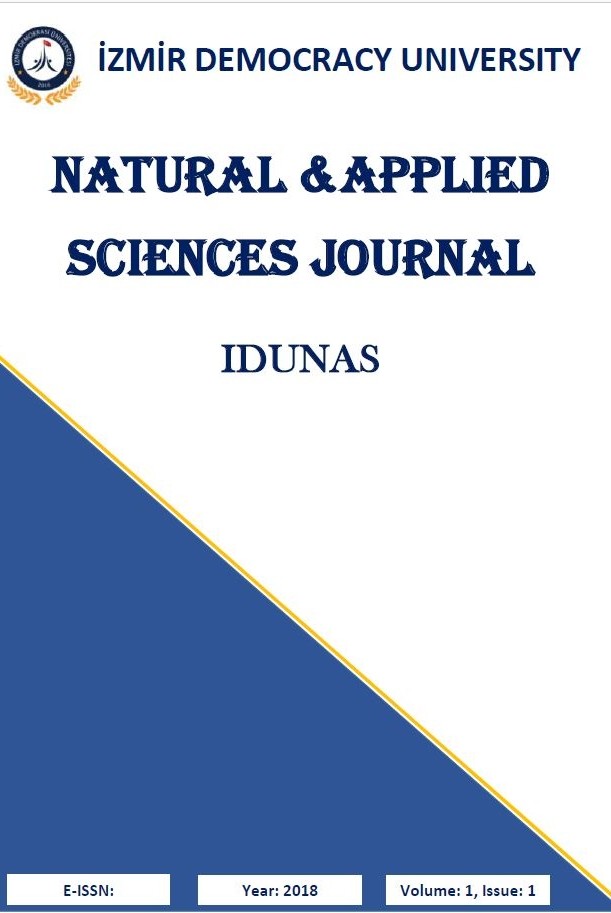INVESTIGATION OF THE STRENGTH BEHAVIOUR OF A FUSELAGE STRUCTURE PLACED IN A LINEARLY EXPANDING WING WITH CIRCULAR ENDS IN CROSS-SECTION
INVESTIGATION OF THE STRENGTH BEHAVIOUR OF A FUSELAGE STRUCTURE PLACED IN A LINEARLY EXPANDING WING WITH CIRCULAR ENDS IN CROSS-SECTION
In this study, a structurally different drop wing geometry was modelled and its mechanical behaviour was investigated with computer aided analysis software within the finite element method. The tip of the drop wing geometry consists of one large and the other small circles. There were linear line profiles between them. In order to prevent collapse in the wing geometry modelled with the plate structure, a profile in the rigid body structure was created and its effect was investigated. The effect of the wing length and the plate thickness covering the wing was examined and shown in the results. It was defined as the profile material for the steel blade and for the standard features. In the static examinations carried out under the pressure loading applied on the wing, it was determined that the vertical deformation caused by the wing length was not linear, and the stresses that occur with the increasing wing plate thickness form a decreasing function. The stresses that occur in the inside of the wing support were intense in the support area, but also in the bending areas.
Keywords:
wing, plate surface pressure, stress,
___
- Grossman, B., Gurdal, Z., Strauch, G. J., Eppard, W. M., Haftka, R.T. (1988). Integrated aerodynamic/structural design of a sailplane wing. Journal of Aircraft, 25(9), 855-860.
- Vicini, A., Quagliarella, D. (1999). Airfoil and wing design through hybrid optimization strategies. AIAA Journal, 37(5), 634-641.
- Alexandrov, N., Lewis, R., Gumbert, C., Green, L., Newman, P. (2000). Optimization with variable-fidelity models applied to wing design, AIAA 2000-841, 38th Aerospace Sciences Meeting and Exhibit. January 2000.
- Potsdam, M., Page, M., Liebeck, R., Potsdam, M., Page, M., Liebeck, R. (1997). Blended wing body analysis and design. AIAA 1997-2317, 15th Applied Aerodynamics Conference, June 1997.
- Liebeck, R. H. (2004). Design of the blended wing body subsonic transport. Journal of Aircraft, 41(1), 10-25.
- Haghighat, S., Martins, J. R. R. A., Liu, H. H. T. (2012). Aeroservoelastic design optimization of a flexible wing. Journal of Aircraft, 49(2), 432-443.
- Jiapeng, T., Ping, X., Baoyuan, Z., Bifu, H. (2013). A finite element parametric modeling technique of aircraft wing structures. Chinese Journal of Aeronautics, 26(5), 1202–1210.
- Rajappan, R., Pugazhenthi, V. (2013). Finite element analysis of aircraft wing using composite structure. The International Journal of Engineering and Science (IJES), 2(2), 74-80.
- Joo, J. J., Marks, C. R., Zientarski, L., Culler, A. J. (2015). Variable camber compliant wing – design. 23rd AIAA/AHS Adaptive Structures Conference, AIAA 2015-1050, January 2015.
- Bartoli, N., Lefebvre, T., Dubreuil, S., Olivanti, R., Priem, R., Bons, N., Martins, J. R. R. A., Morlier, J. (2019). Adaptive modeling strategy for constrained global optimization with application to aerodynamic wing design. Aerospace Science and Technology, 90, 85-102.
- ISSN: 2645-9000
- Başlangıç: 2018
- Yayıncı: İzmir Demokrasi Üniversitesi
